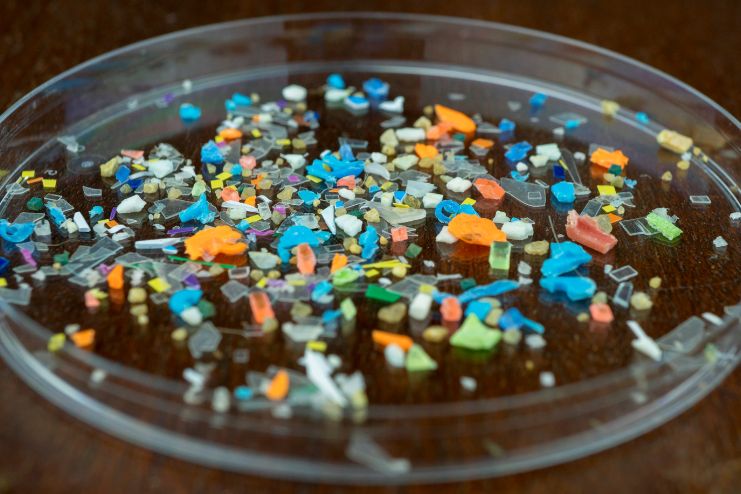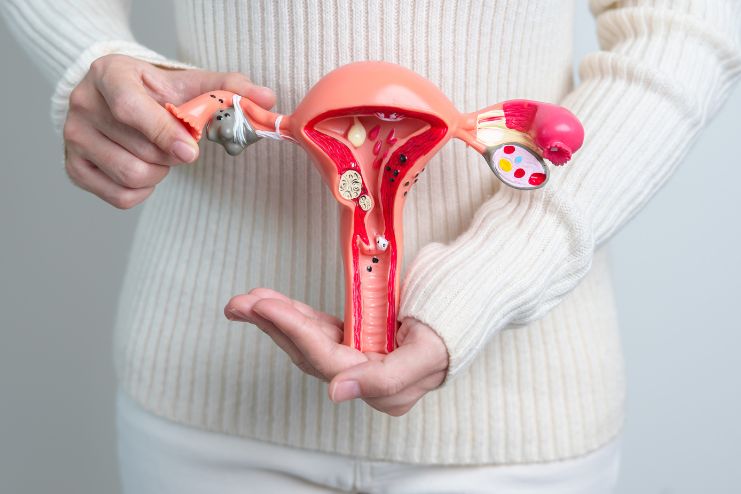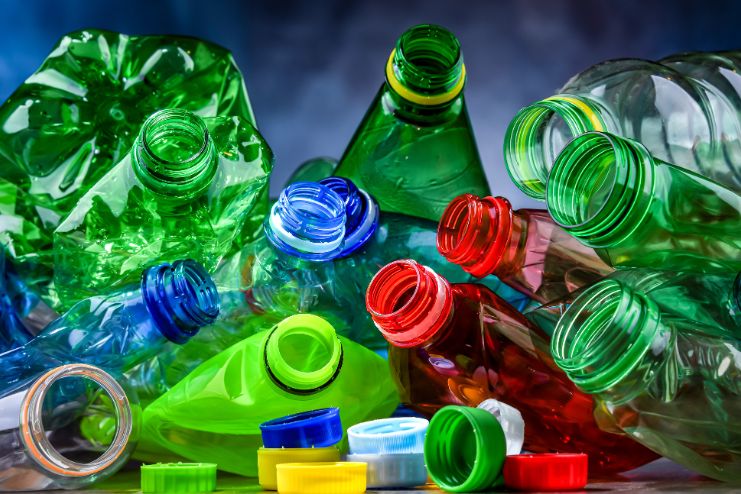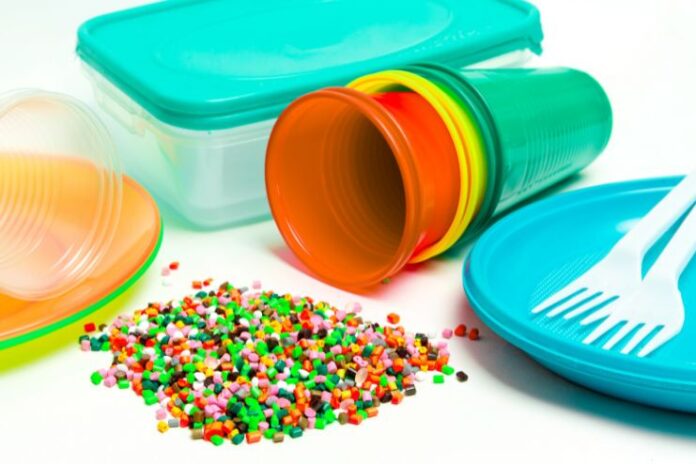Affiliate Disclaimer
Some links in this article are affiliate links. We may earn a small commission if you make a purchase through these links, at no extra cost to you. We only recommend products we find useful to our readersBisphenol A (BPA) is more common than you think—present in everything from plastic containers to receipts. While it may seem harmless, increasing research points to BPA as a potential contributor to fertility issues. As more couples struggle with reproductive health, this environmental toxin is under scrutiny for its ability to disrupt hormones and interfere with both male and female fertility.
But what exactly is BPA, and how does it impact fertility? Studies show that BPA mimics estrogen, affecting hormone levels in women and potentially disrupting ovulation and egg quality. For men, BPA can lower sperm count and quality, making conception more difficult. What’s even more concerning is that BPA hides in everyday items—plastic packaging, canned foods, and even thermal paper receipts.
In this article, we will explore what BPA is and how it affects both male and female fertility, diving into its specific impact on reproductive health. We’ll uncover hidden sources of BPA in everyday life and provide practical tips on how to reduce your exposure to this chemical. Additionally, we’ll look at ways to detox BPA from your body to help protect and improve fertility. Let’s dive into the science and discover how you can take steps to safeguard your reproductive health from the potential harms of BPA.
What is BPA?

BPA, short for Bisphenol A, is a synthetic chemical compound widely used in the production of polycarbonate plastics and epoxy resins. Since the 1950s, BPA has been a key ingredient in making hard, clear plastics for various consumer goods. While its durability is appreciated, concerns have risen about its impact on human health, particularly fertility.
Where BPA is Commonly Found
- Plastic water bottles and food containers: Especially those labeled as hard or clear plastic.
- Canned foods and beverages: The inner linings of cans are often coated with BPA-based resins.
- Thermal receipts: Paper receipts from ATMs, grocery stores, and gas stations are often coated with BPA, making skin exposure common.
- Personal care items and household goods: Some personal care products, like certain hygiene items, also contain BPA.
How BPA Leaches Into Your Life
One of the major concerns with BPA is its tendency to leach into food and beverages, particularly when plastic is heated or exposed to sunlight. For example, microwaving food in plastic containers or leaving water bottles in hot cars increases the chances of BPA contamination. Additionally, BPA can be absorbed through the skin when handling thermal receipts.
- BPA is found in a wide range of consumer products, especially those made from hard plastic or lined with epoxy resins.
- Exposure to BPA can occur through food, drinks, and even skin contact with receipts.
- “BPA-free” does not necessarily mean safer, as alternative chemicals may still pose similar risks.
Are BPA-Free Alternatives Safer?
While many products now claim to be “BPA-free,” substitutes like BPS (Bisphenol S) and BPF (Bisphenol F) may not be much safer. These chemicals can still mimic hormones and interfere with the endocrine system, raising concerns about their potential effects on fertility and long-term health.
How BPA Affects Female Fertility

One of the most alarming aspects of BPA is its ability to mimic estrogen, an essential hormone for reproductive health. This chemical can disrupt hormonal balance, leading to a variety of fertility issues in women. Here’s a deeper look at how BPA exposure can negatively impact female fertility:
- Ovulatory disorders: BPA can interfere with regular ovulation, making it harder for women to conceive. Disrupted hormone levels can lead to irregular or absent menstrual cycles.
- Reduced ovarian reserve and poor egg quality: Studies show that BPA exposure may reduce a woman’s ovarian reserve, meaning fewer viable eggs are available for fertilization. The chemical can impair oocyte (egg cell) maturation, leading to lower egg quality and affecting embryo implantation.
- Increased risk of PCOS and endometriosis: Research has linked BPA to conditions such as Polycystic Ovary Syndrome (PCOS) and endometriosis, both of which make it more difficult to conceive. Women with PCOS often experience hormonal imbalances and irregular periods, while endometriosis can cause pain and complications with fertility.
- Higher miscarriage rates and implantation failure: BPA exposure has been associated with a higher risk of miscarriage and implantation failure, particularly in women undergoing fertility treatments like IVF. The disruption caused by BPA may prevent successful embryo implantation or increase the likelihood of early pregnancy loss.
- Hormonal imbalances: As an endocrine disruptor, BPA can mimic or interfere with estrogen levels, affecting the production of other essential reproductive hormones. This hormonal imbalance can create obstacles in maintaining a healthy reproductive system.
- Oxidative stress and epigenetic changes: BPA has also been shown to increase oxidative stress in the ovaries, which can damage eggs and impair fertility. Additionally, BPA may cause epigenetic changes—altering gene expression in ways that can negatively affect reproductive function.
Overall, BPA’s impact on female fertility is concerning as it interferes with key aspects of reproductive health, from egg quality to hormonal balance and implantation success.
BPA’s Impact on Male Fertility

BPA doesn’t just affect women—it also poses significant risks to male reproductive health, primarily by disrupting testosterone production and impairing sperm quality. Here’s a closer look at how BPA can affect male fertility:
- Lower sperm count: Research shows that BPA exposure is linked to a decrease in sperm concentration. Men exposed to BPA may have fewer viable sperm, which can lower their chances of conceiving naturally.
- Reduced sperm motility: BPA exposure can also affect how well sperm move. Sperm with reduced motility may struggle to swim toward the egg, decreasing the likelihood of fertilization.
- Sperm DNA damage: BPA can cause genetic damage in sperm, leading to DNA abnormalities. This genetic instability may impact embryo development, increase the risk of miscarriage, or result in developmental issues in offspring.
- Disruption of spermatogenesis: BPA interferes with the process of sperm production, known as spermatogenesis. This disruption can lead to fewer healthy sperm being produced, contributing to fertility problems.
- Oxidative stress and mitochondrial dysfunction: BPA increases oxidative stress in the testes, which can damage sperm cells. Additionally, it can disrupt mitochondrial function, which is crucial for providing energy to sperm, further reducing their motility and viability.
- Testicular damage: Some studies suggest that BPA exposure can cause testicular lesions, further contributing to fertility issues by impairing sperm production.
In short, BPA poses a significant threat to male fertility, affecting everything from sperm quality to hormonal balance. Addressing BPA exposure is essential for men seeking to protect their reproductive health.
Hidden Sources of BPA in Everyday Life

Even if you’re avoiding obvious culprits like plastic water bottles, BPA might still be making its way into your routine through lesser-known sources. Here’s a closer look at where BPA might be hiding:
- Plastic Food Containers: Especially when heated or reused, plastic containers can release BPA into your food, increasing exposure. Opt for BPA-free or glass alternatives to reduce the risk.
- Canned Foods and Beverages: Many metal cans have BPA-based linings to prevent rust and contamination, which can seep into the food or drink. Switching to fresh or frozen products is a safer option.
- Thermal Receipts: The shiny receipts from stores, ATMs, and parking meters often contain BPA. Frequent handling allows BPA to be absorbed through your skin, so it’s best to limit contact and wash your hands after handling them.
- Personal Care Products: Some cosmetics and toiletries contain BPA-based ingredients. Check the ingredient lists on skincare and beauty products to avoid hidden BPA.
- Household Items: BPA can be found in everyday items like baby bottles, cookware, and even dental fillings. Look for BPA-free alternatives, especially for things used frequently or with food.
Other potential sources of BPA include:
- Recycled Paper Products: Certain recycled items, like pizza boxes or takeout containers, may still have traces of BPA from thermal paper or other sources.
- Medical Devices and Dental Sealants: Some medical equipment and dental treatments, including sealants, can contain BPA, which could contribute to exposure over time.
- Electronics and Compact Discs: BPA is often used in manufacturing certain electronic components, though the risk of exposure from these items is typically lower.
Being mindful of these hidden sources can help you reduce your overall exposure to BPA and make safer choices for your health.
How to Reduce BPA Exposure to Protect Fertility

While it’s nearly impossible to eliminate BPA entirely from your life, there are several simple steps you can take to significantly reduce your exposure and safeguard your fertility:
- Switch to Glass or Stainless Steel: Instead of using plastic water bottles and food containers, opt for BPA-free alternatives like glass or stainless steel. These materials are not only safer but also more durable and eco-friendly.
- Avoid Microwaving Plastic Containers: Heating plastic accelerates the leaching of BPA into your food. Always transfer meals to glass or ceramic dishes before microwaving, and avoid exposing any plastic container to high temperatures.
- Limit Canned Foods: Canned foods and beverages often contain BPA in their linings. Whenever possible, choose fresh, frozen, or glass-packaged options to reduce exposure.
- Wash Hands After Handling Receipts: Thermal paper, commonly used for receipts, contains BPA. Wash your hands after handling them to minimize skin absorption, or request digital receipts instead.
- Read Ingredient Labels: Some personal care products, like lotions and cosmetics, may contain BPA derivatives. Be mindful of ingredient lists and choose safer, BPA-free alternatives when selecting skincare or beauty products.
Other helpful strategies include:
- Reduce Canned Food Consumption: The linings of metal cans often contain BPA, so opting for fresh or frozen foods is a safer choice.
- Be Mindful of Recycled Paper Products: Items like pizza boxes and takeout containers made from recycled paper may still contain traces of BPA.
- Limit Plastic Use in the Kitchen: When storing food, try to use glass or stainless steel containers rather than plastic, and avoid using plastic wraps that may contain BPA.
By adopting these simple changes, you can effectively minimize BPA exposure and protect your overall health and fertility in the long run.
Detoxing BPA from Your Body

While your body is naturally capable of eliminating BPA over time, you can take proactive steps to support the detoxification process and help rid your system of this harmful chemical faster:
- Eat Antioxidant-Rich Foods: Cruciferous vegetables like broccoli, kale, and cauliflower are known for their ability to help the liver process and eliminate toxins, including BPA. Foods rich in antioxidants, such as berries, nuts, and seeds, can protect your body from oxidative stress caused by BPA exposure and support your natural detox processes.
- Stay Hydrated: Drinking plenty of water is crucial for flushing out toxins, including BPA, through urine. Staying well-hydrated ensures your body can efficiently eliminate harmful substances.
- Engage in Regular Exercise: Physical activity boosts circulation, supports metabolic functions, and increases sweating, all of which contribute to detoxification. Plus, exercise has added benefits for overall health.
- Use Saunas: Sweating is one of the body’s natural ways to eliminate toxins stored in fat tissues. Spending time in a sauna can increase sweat production, aiding in the removal of BPA and other chemicals.
- Support Healthy Liver Function: Your liver plays a major role in detoxification. To support its function, eat a balanced diet rich in fruits, vegetables, and whole grains.
- Consider Fasting: Intermittent fasting or other forms of fasting can promote overall health and enhance the body’s natural detoxification systems.
By incorporating these strategies into your routine, you can help your body effectively detoxify and protect yourself from the long-term effects of BPA exposure.
Final Thoughts
In conclusion, BPA (Bisphenol A) poses significant risks to both male and female fertility by disrupting hormonal balance, impairing sperm and egg quality, and causing DNA damage. Its effects are far-reaching, with hidden sources in everyday products like plastic containers, canned goods, and thermal receipts. While completely avoiding BPA is challenging, steps can be taken to reduce exposure, such as using BPA-free products, avoiding heating food in plastic, and opting for fresh, whole foods.
Supporting your body’s natural detoxification processes is also crucial, and this can be done by consuming antioxidant-rich foods, staying hydrated, exercising regularly, and using methods like saunas to enhance toxin elimination. By taking these precautions, you can minimize the adverse effects of BPA on fertility and overall health, while also promoting long-term well-being. Awareness and proactive lifestyle changes are key to safeguarding against the harmful impacts of BPA exposure.
Cut BPA, boost your wellness.
References
- What is BPA? Should I Be Concerned About it?
- What is BPA and is it Safe?
- Nutrition and Healthy Eating
- Bisphenol A: An Emerging Threat to Female Fertility
- The Effects of Bisphenol A on Human Male Infertility
- Common BPA Sources—And How to Avoid Them
- BPA: 7 Secret Sources
- Plastics & Fertility: 10 Simple Ways to Help Protect Your Fertility From Chemicals
- 5 Ways to Detoxify from the Synthetic Sex Hormone, Bisphenol A (BPA)
In this Article

















